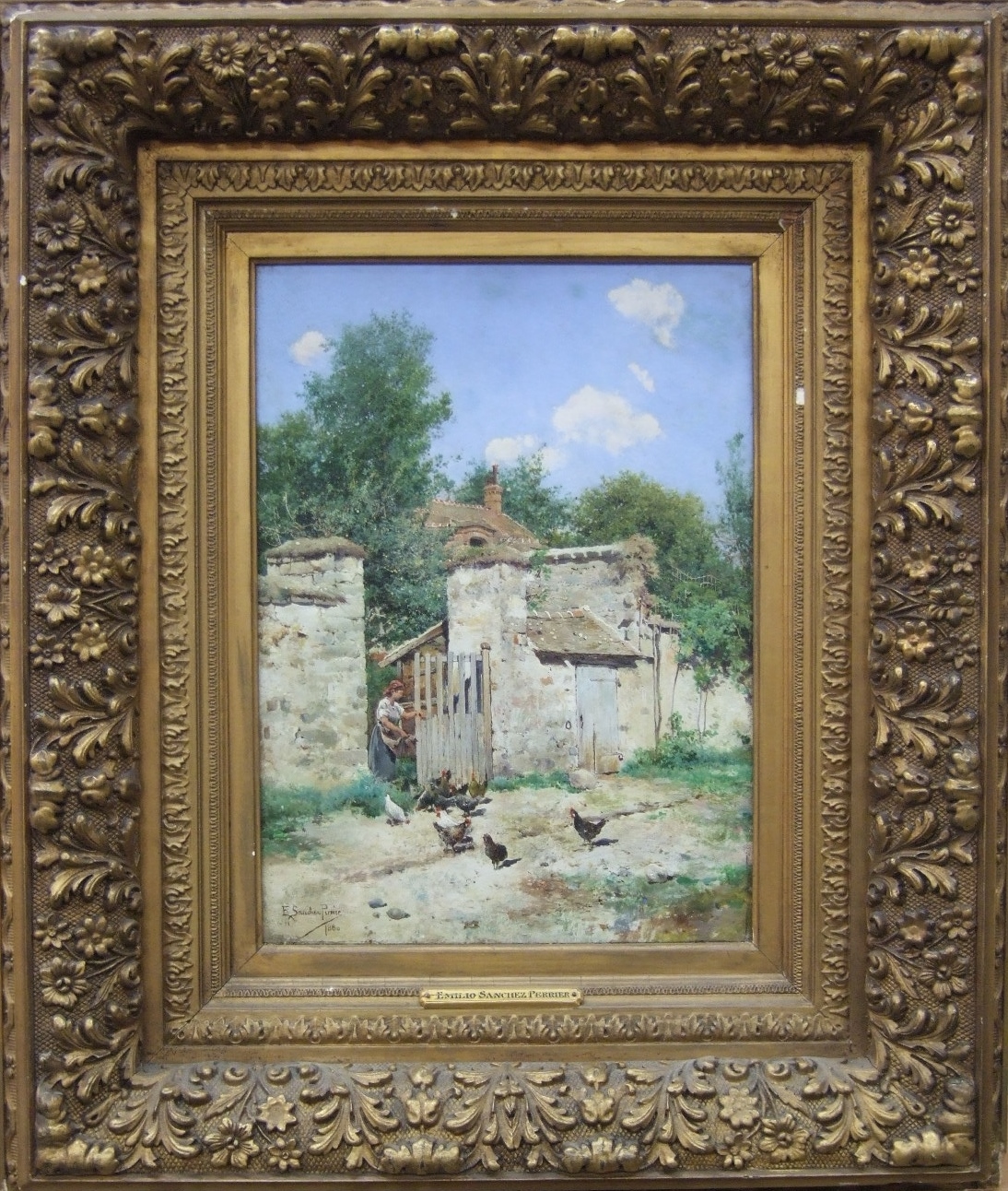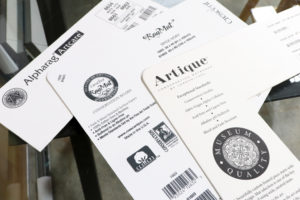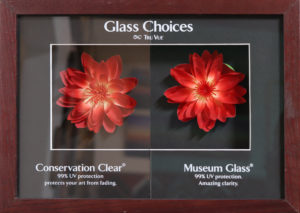Frequently Asked Questions in the Frame Shop

With Brigitt Thomas
Owners of art want to care and preserve their collections as best they can but sometimes it’s assumed that if it was purchased framed from a gallery or a reputable seller that it has already been framed with all the best materials. Unfortunately, that isn’t always the case.
What does conservation or archival mean?
A conservation fit or archival fit is when a framer uses products made specifically for preserving and conserving art. Materials made for framing have come a long way over the years. Matting and backing boards will contain no harmful acids. Tapes, adhesives, and mounting materials also contain no harmful additives and will be reversible. Glass types have been optically coated to block out 99% of harmful UV rays. All the elements contribute to making the safest environment possible for your art.
What is an acid-free or “rag” mat?
There are several types of mats. Paper mats are still in use and serve lots of purposes, however there are conservation boards of archival quality and are free of acid which can “burn” artwork. They do vary by what they are made with and how they are treated. The highest quality are made of 100% cotton fiber and are called “rag” mats but there are excellent archival boards now made of alpha cellulose.

Why/when does my art require acid free materials?
Your art requires acid free materials any time you want to preserve or protect something long term. Is it valuable? Is it sentimental? How do determine if what you have already hanging in your home have acid free products on them? The bevel of older mats turn yellowish if there toning where the art meets the mat then you need an update. Does the backing include either brown paper or cardboard? All no-no’s in the framing world!
What’s are the different options of glass you offer?
Framers should offer several types of glass. Most basic is premium clear or premium reflection control (aka non-glare). These offer surface protection but no UV screening. Next would be the various grades with an optical coating offering 99% UV protection. Conservation Clear, Conservation Reflection Control and Museum Glass. The museum “grade” appears perfectly clear, offers UV protection and a coating that is non-reflective. It is similar to what you find on eyeglasses to make the glass “disappear”. It offers superior color and light transmission.

Why do I need a mat? And how much mat do I need to show?
Mats are mostly optional but have several important functions. Two are important in preservation – to keep the artwork from being in contact with the glass and to serve as a convenient, safe and acid free way to “hold” the art. The other two are more decorative – to increase the overall size of the frame work and finally, to add color or decorative elements in framing.
How much mat you see is most always a personal preference and there few rules other than what is proportional and pleases the eye. However, the border around an original print can dictate the size mat boarder. Original art of any kind should not be trimmed or altered.
Featured image (and beautifully ornate frame!), “Untitled (Feeding Chickens)” by Emilio Sanchez Perrier.
